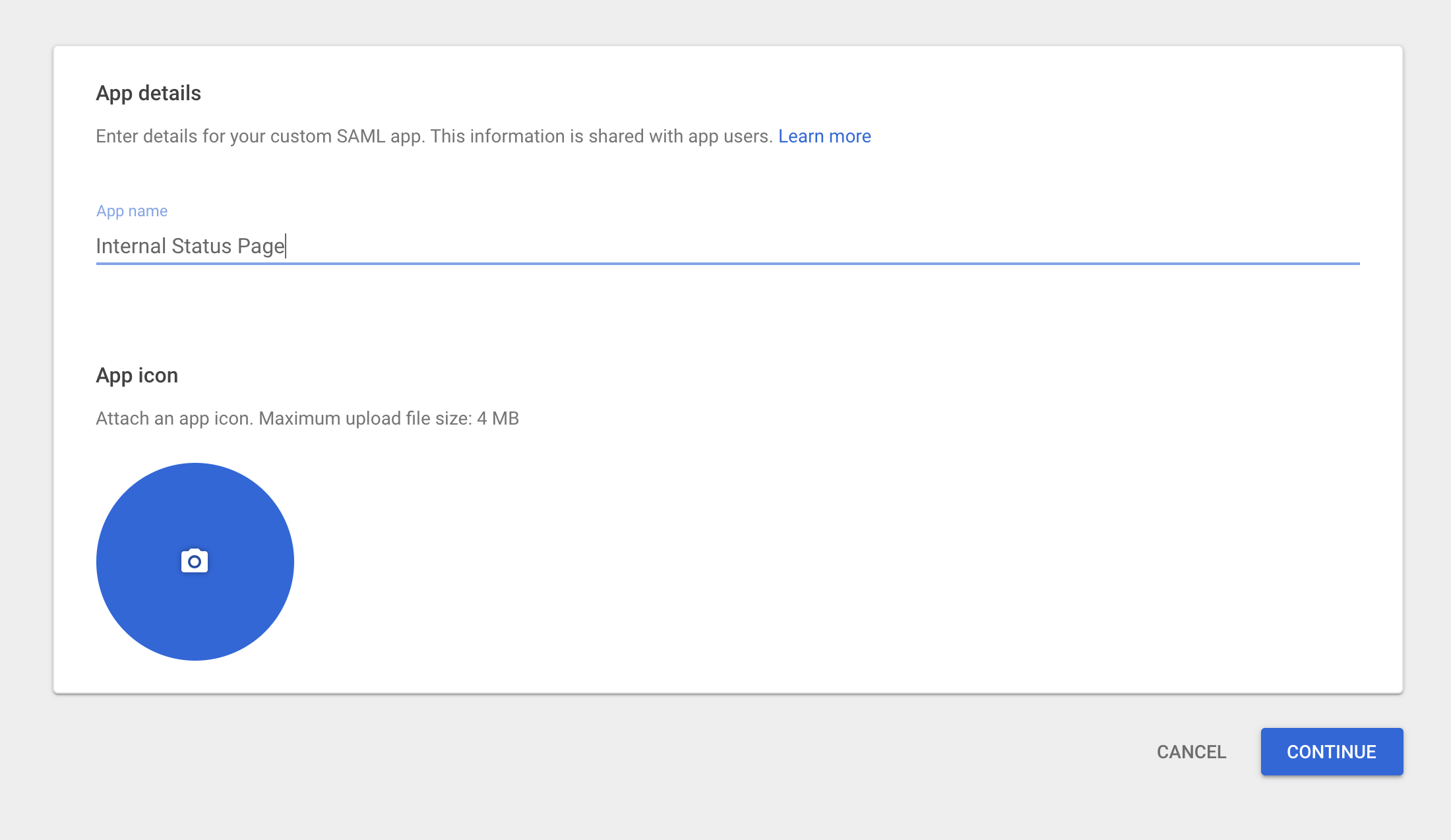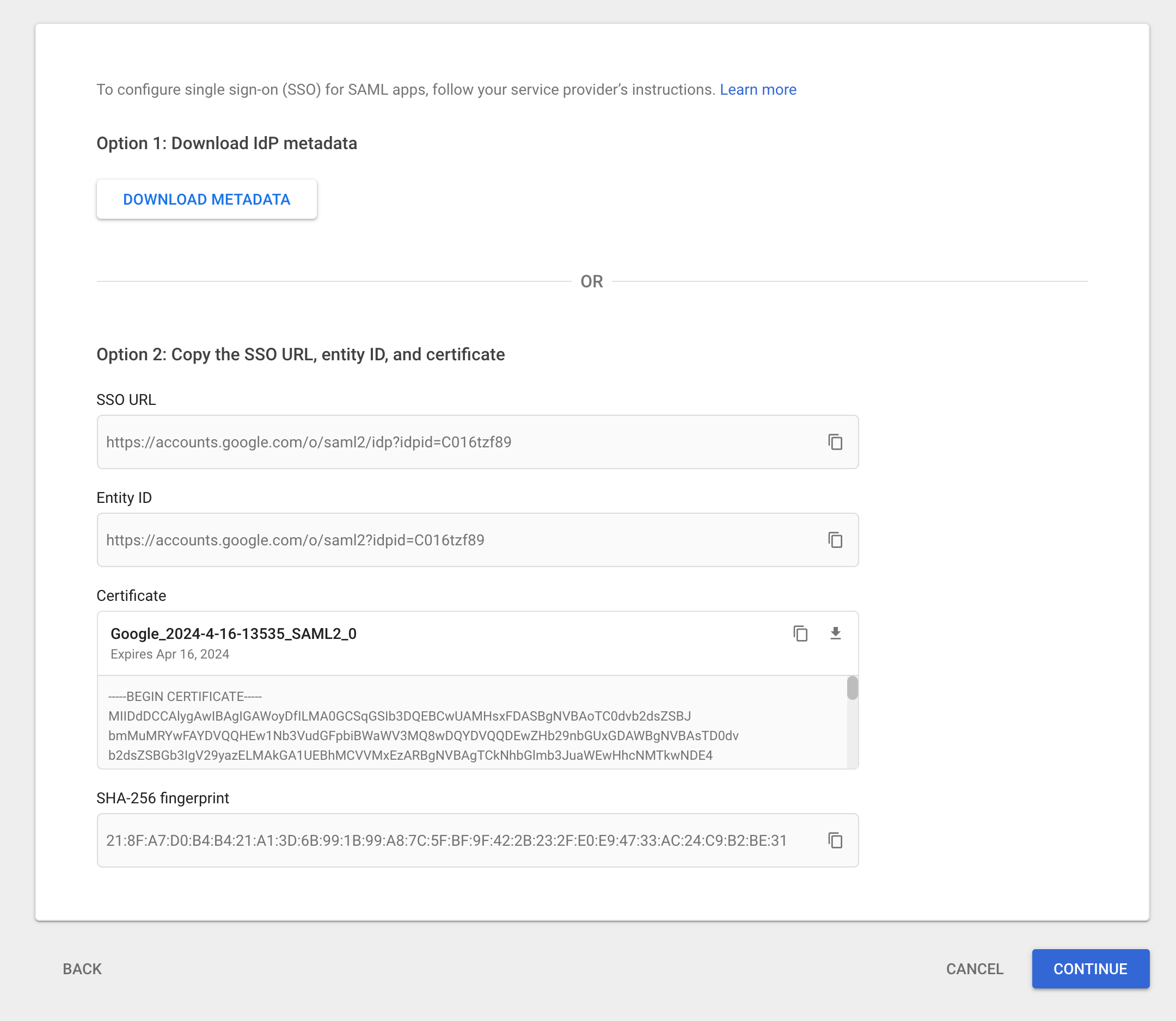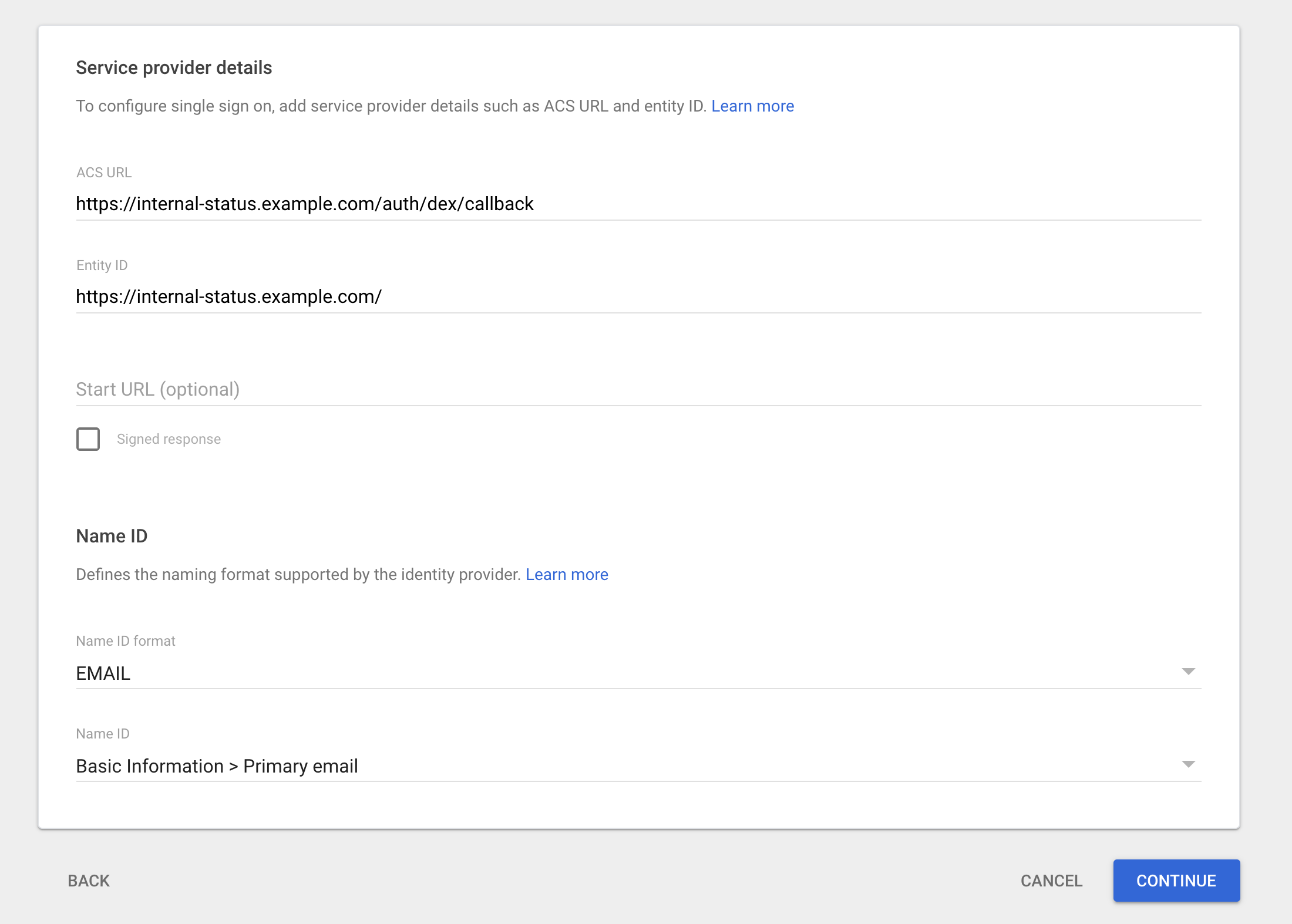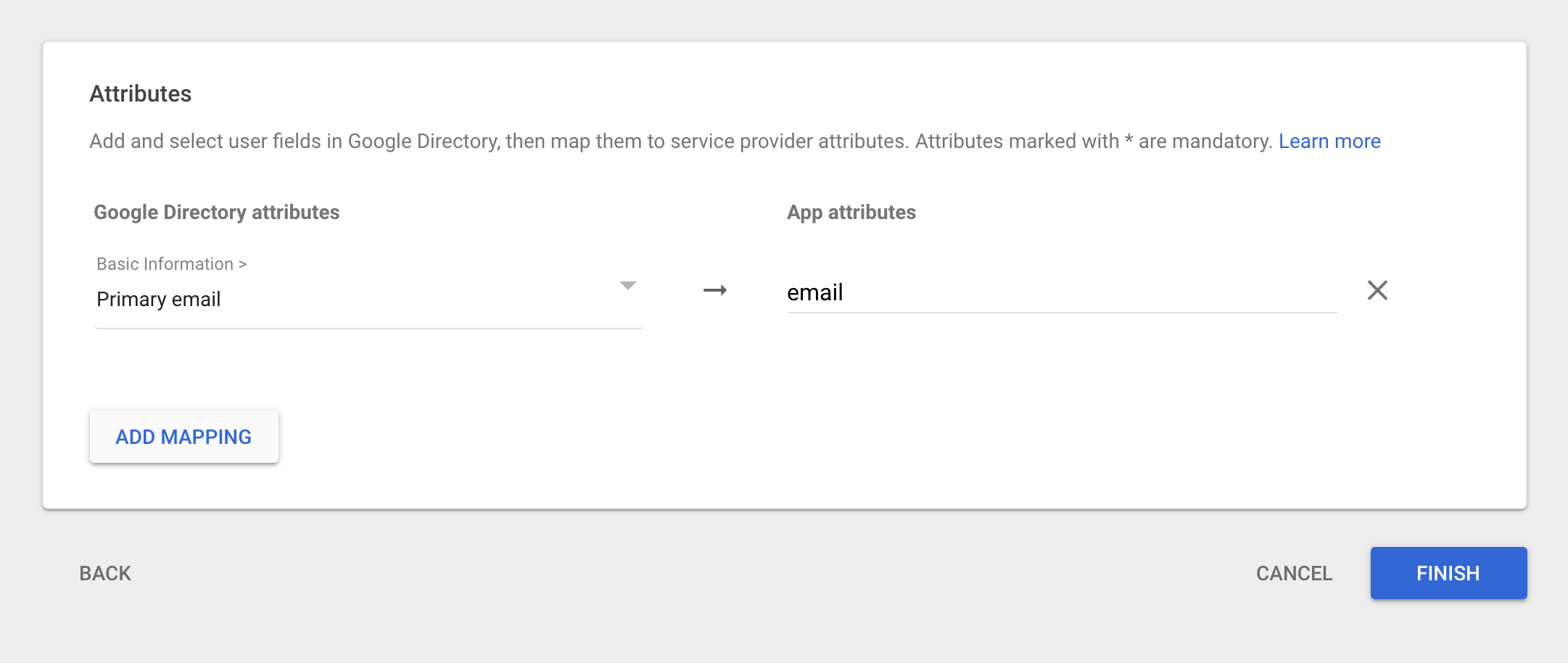Google Auth for Status Pages
With FireHydrant's status pages, you can lock them behind your SSO provider so that only employees or other organization members can access them.
Note:We currently only support SAML 2.0 for SSO-authenticated status pages. In addition, this limits access to anyone in your organization who can login via SSO, not only users with FireHydrant licenses.
Prerequisites
- You'll first want to set up and configure a status page. Once the page is created and accessible, you can start working through these instructions to lock it behind authentication.
Google SAML
1. Create SAML application
Specify a name like "Internal Status Page" and click Continue.

Creating a new SAML app in Google
2. Download metadata file
You will need this file in a later step.

Auto-generated info after creating the SAML app
3. Service provider details
Use the information below to configure the service provider details, where <custom domain> is the custom domain for your status page (for example, status.acmeco.com).
Service provider details
| Setting | Value |
|---|---|
| ACS URL | https://<custom domain>/auth/dex/callback |
| Entity ID | https://<custom domain> |
| Start URL | -leave blank- |
Name ID
| Name | Value |
|---|---|
| Name ID format | |
| Name ID | Basic Information > Primary email |

Example service provider details
4. Create attribute mappings
Google Directory attributes
| Name | Value |
|---|---|
| Basic Information | Primary Email |
| App Attributes | email |

Google Directory attributes example
5. Enable for org units
Once the above is set up, you can turn the application on for one or more organizational units within your Google Workspace.

Configuring org units example 1

Configuring org units example 2
6. Submit metadata to FireHydrant Support
Once finished, attach the identity provider metadata document from Step #2 on a support ticket.
Your support representative will complete the setup with you from there.
7. Verify
Once FireHydrant has configured and finished the setup, attempting to access an SSO-locked status page should redirect you to your organization's SSO sign-on page.
Next Steps
- Learn how to use your FireHydrant status page
- Learn more about Posting Updates during incidents
Updated 19 days ago
